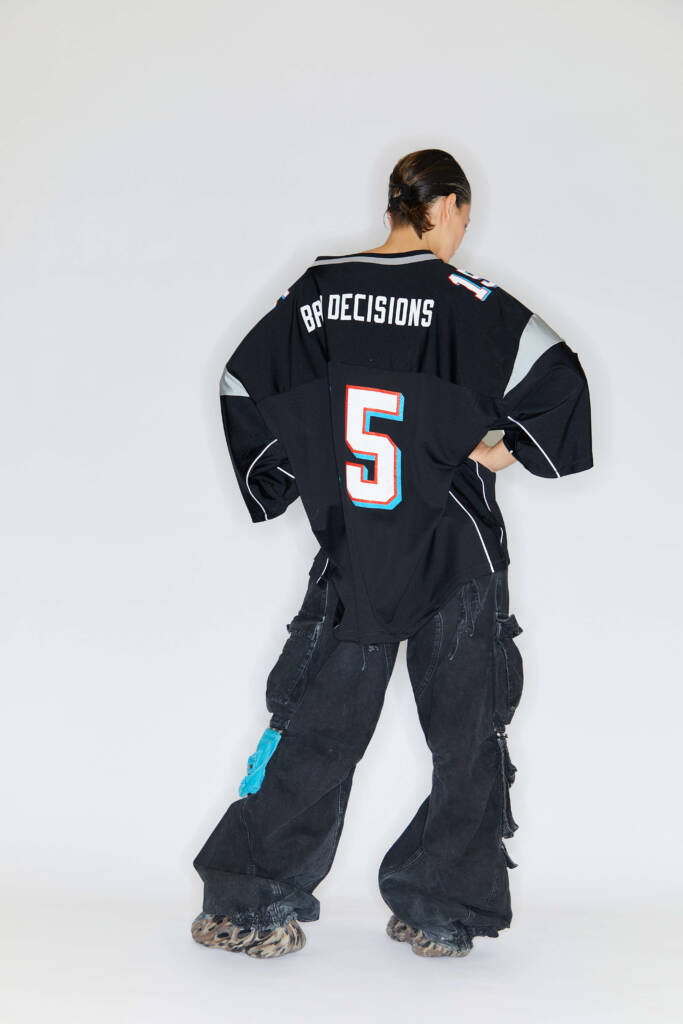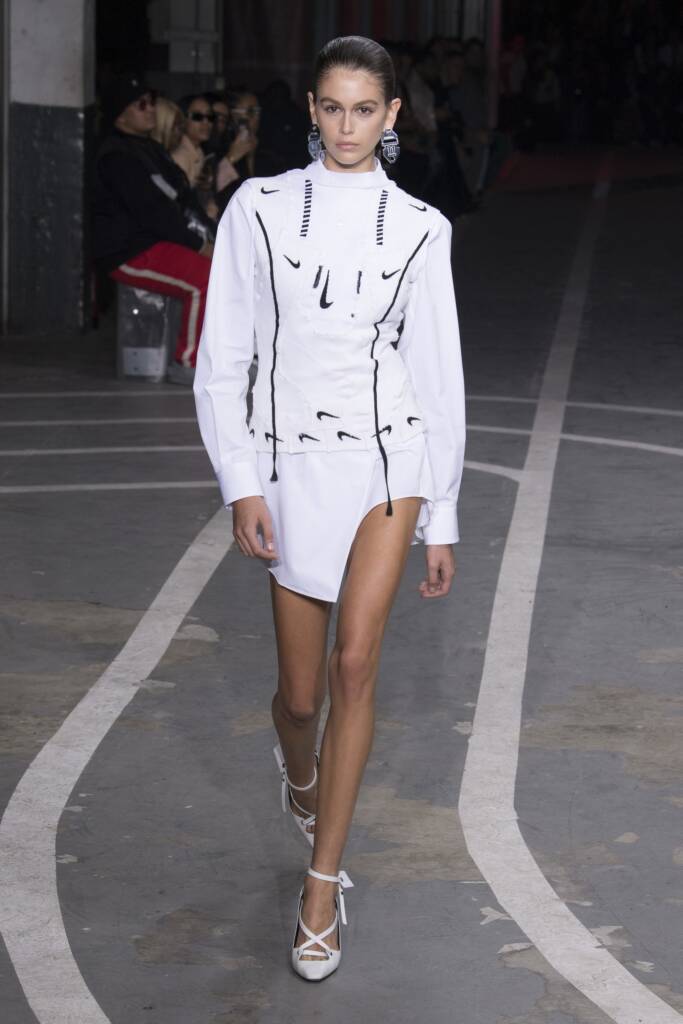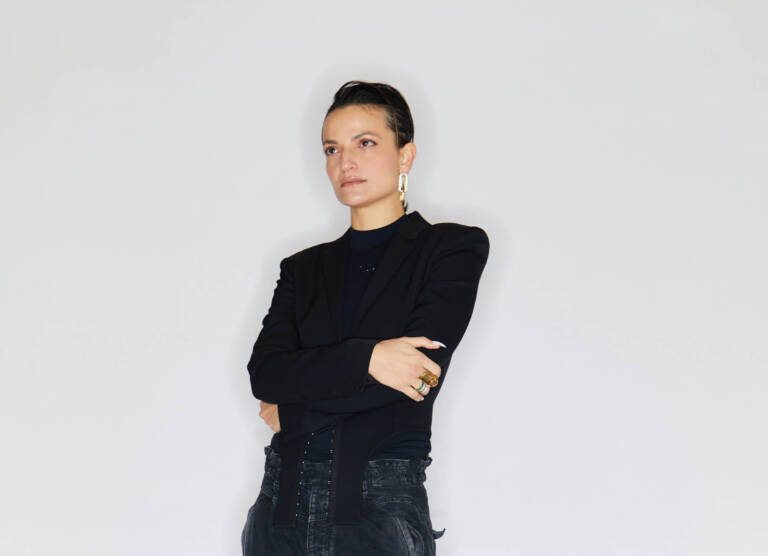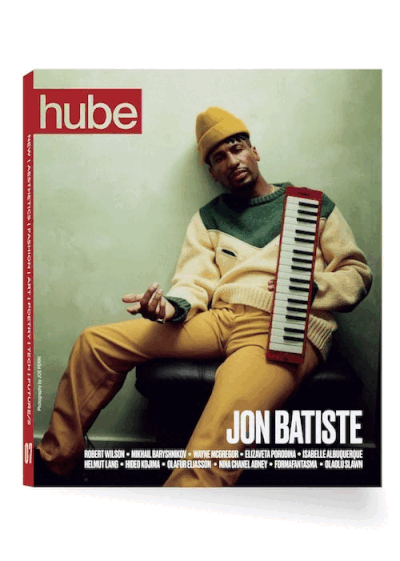

Ever wonder how a passion for design evolves into a brand that defies all labels? Sabrina Mandelli, the visionary behind SSHEENA, shares her journey from graduating in Fashion Design at Istituto Marangoni in 2008 to steering roles at Dolce & Gabbana and Off-White before launching her own line in 2015. Her story is a study in structured chaos – a blend of disciplined training and rebellious flair – that challenges convention and redefines what it means to be a designer.
hube: Can you share insights into your journey from graduating in Fashion Design at Istituto Marangoni in 2008 to founding SSHEENA in 2015?
Sabrina Mandelli: I have always loved the idea of design: having a rounded vision of something and knowing how to shape it into clothes. Creating a story over time and codifying a taste and an aesthetic recognisable by all. That’s why I started studying fashion design at Marangoni; but I immediately understood that to be able to shape an idea into a dress, you need to master the technique and understand how a garment is constructed, so I also started a sewing course. I started at Dolce & Gabbana just after Marangoni: I was in charge of dressing celebrities, and there I learned how a large company should work, what is needed for everything to go as planned, and how a company is structured. Afterwards, I started working for Ring, a denim brand produced in Milan, which no longer exists today. The brand was small, and it was really educational because I had to carry out multiple roles transversal to design, and I interfaced with suppliers directly.
From there, the consultancy for Off-White began when it was not yet very well known; from there, eight very intense years followed. Things exploded in our hands, and in the blink of an eye, it became the coolest fashion house. There, I learnt how to manage a constantly increasing set of responsibilities and work. I also understood that fashion isn’t just about sartorialism but also storytelling and coolness. All these totally different experiences converged into SSHEENA, which is, of course, my favourite thing. Here, I can build my world and tell stories through garments exactly how I want, without compromises.
h: How did your experiences at Dolce & Gabbana and as Womenswear Head Designer at Off-White influence your approach to establishing your own brand?
SM: Imagine the creative chaos of Off-White with the perfect structure of a company such as Dolce & Gabbana – it’s a match made in heaven. You can have infinite possibilities, which will be the jackpot for a brand. That’s what I would love to keep with me as SSHEENA grows.
h: SSHEENA is described as embodying complex female characters, such as those from Billy Wilder’s films. Can you elaborate on how these influences shape your designs?
SM: You would not find a direct reference to these women in the collection. They are the starting point, but we focus on their complexity and abstract it into complex clothes – at first sight, they seem quite regular, but then your eyes keep catching endless details and information, leaving you feeling uncomfortable and disoriented. It’s a grotesque feeling.
We want you to question imperfection, and we work in that minimal yet disturbing space made of uncertainty and a lack of stability – the sensation we feel when we miss a step while walking up a staircase when we dream of falling, or when we set foot on dry land after a day on a boat. A precise sensation but difficult to define.
h: Your brand merges elements of punk aesthetics with classic luxury, like pairing a Chanel bag with a rebellious attitude. What message do you aim to convey through this juxtaposition?
SM: SSHEENA’s collections really represent my attitude. I refuse any kind of classification. The fact that I own a Chanel bag doesn’t conflict with the fact that you will find the Ramones playing in my AirPods. I’m super punk, and I really had a punk haircut when I was younger, but at the same time, I was hanging out wearing Cavalli or Rick Owens.
Personalities are very complex and fluid, and mood also plays an important role. I don’t want to be stuck in clothes that speak a single language. I need complexity, I need mistakes and confusion. Formal wear and punk aesthetics may seem to speak two completely different languages, but I’m that – I feel like I’m that impossible conversation.

